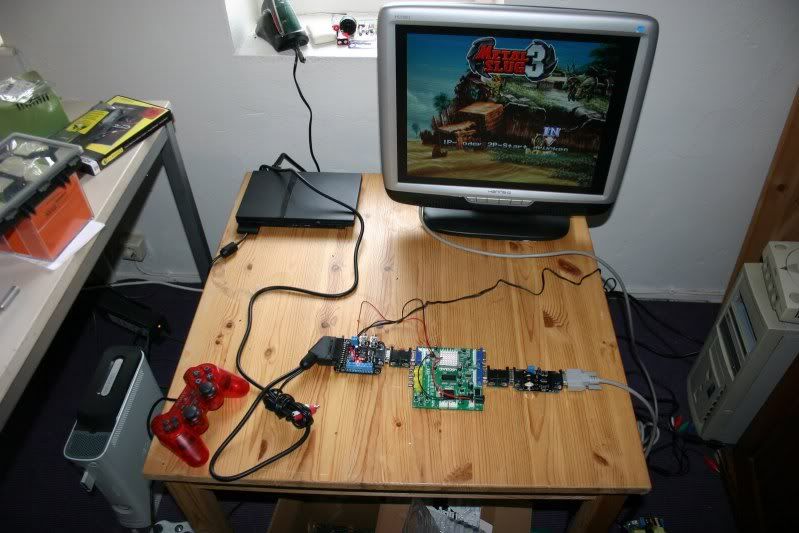The scaler doesn’t output in SD component (right?), so you wouldn’t be able to, for example, hook up a Genesis to a SDTV with Component inputs. But on the flip side, if you did RGB to Component, you wouldn’t have a scaler for your HDTV.
I mentioned above some advantages a scaler has, if you think I’ve overlooked something or need to clarify something please say so.
What you do with the PS2 is up to you. If you’re fine with only having 480i/240p support then run it through the scaler. But for some games (Thunder Force VI immediately comes to mind, so gorgeous) you will miss out on all the detail that you gain when running it in 480p. Using a game in its native 480p will look better than scaling its 480i version.
If you wanna get contrived with the PS2, you can do this… run one PS2 with component outputs, use cable splitters to feed one half into a component switchbox, and use that for 480p games. For the other half, use a Component to VGA cable (analog cable that just gives it a different connector, not a scaler) to feed it into the scaler chain. Use the scaler’s output for non-480p games and the direct output for 480p (and up, such as GT4) games.
The above doesn’t just apply to PS2, the Xbox could also be hooked up this way, though the vast majority of its game library is in 480p (and I think with a softmod you can force every game to output in 480p, but don’t quote me on that).
One thing to keep in mind is you will need to switch your PS2 between RGB and YPbPr modes each time you go between 240p/480i RGB and 480p Component (yPbPr).
Or you can get a Sync On Green RGB to VGA cable (entirely analog) and use that in your chain to run your PS2 through VGA for 480p games. Actually the Xbox has Sync On Green too, so same applies for that. Don’t think this would work for games above 480p as I’m not sure if your TV will handle VGA running in 720p or 1080i, YMMV. But those games are few and far between for retro consoles (GT4, that Matrix game, and Atari Anthology are the only ones that come to mind immediately).
 so you would need to make sure to buy one that is noted to not do this.
so you would need to make sure to buy one that is noted to not do this.